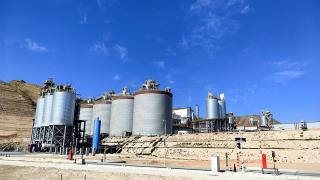Preheater and precalciner design play a prominent role in NOx and CO reduction from cement kilns. In this article, Cinar focusses on calciners and their impact on NOx and CO reduction efforts in the cement plant, offering cyclone combustion chamber and air-through calciners as models. By Dr Michail P Akritopoulos & Dr Tahir Abbas, Cinar Ltd, UK.
Cement kilns with preheaters and calciners have significant potential for reducing both NOx and CO emissions, primarily formed inside the kiln. The achievable reduction levels of NOx and CO depend, to a large extent, on the design of the preheater and calciner as well as on the physical and chemical properties of fuels fired. For example, in a separate-line calciner, it is only possible to suppress the formation of NOx and CO within the calciner as the design does not allow for ‘conditioning’ of the kiln-generated NOx and CO concentrations unless special measures are applied. On the other hand, inline preheater/calciner designs offer up to 80 per cent reduction efficiency of both pollutants, whereas this efficiency is cut to 20-30 per cent when the calciner fuels are fired in cyclone combustion chambers (CCC, sometimes also referred as RSP). When an attempt is made to lower NOx formation in CCCs, usually by creating excessively higher fuel-rich conditions, CO emissions are increased. In this article, two examples, one for a CCC and one for an air-through (AT) calciner are presented.
